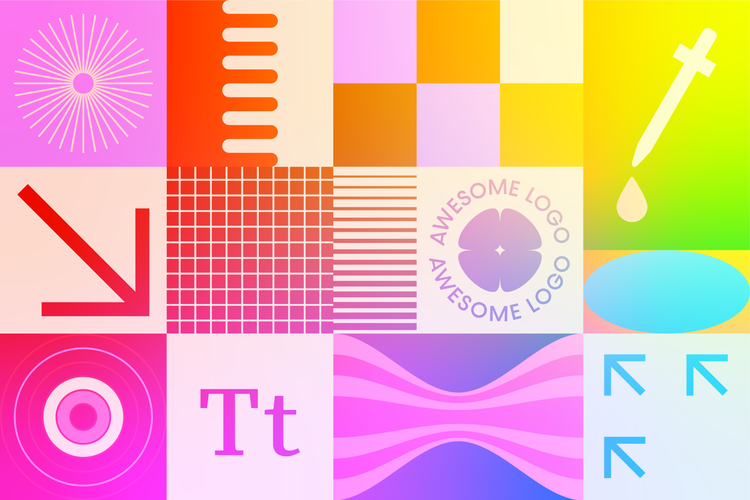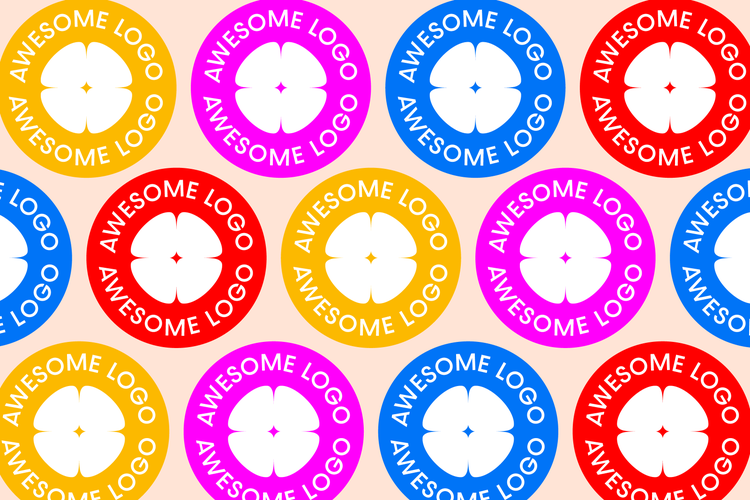Brand personality: traits, examples, and how to define it
Learn how to create an authentic brand identity that resonates with your audience.

Brand personality encapsulates how your brand communicates its values and beliefs to your audience through visual cues, communications, and marketing. Every brand has a personality, but brands that put the work into defining their personality have a much better chance of connecting with their target audience. That’s why it’s essential to define your brand personality early in the brand strategy process and refine it as you go.
Establishing this personality is all about connecting with people on an emotional level — and when brands do it correctly, they can build relationships and loyalty with their customers. In fact, 88% of consumers say authenticity is a crucial factor when deciding which brands to support. If the tone and character of your brand don’t resonate with customers, they’re probably not going to buy from your company.
This article will explore brand personality traits and how you can define them for your business. We’ll also look at some examples of brand voice and tone from well-known brands and see how they relate to their target audience.
Summary/Overview
What is brand personality?
Brand personality is a recognizable set of characteristics and traits that a brand conveys to its customers. Brand personality is, quite obviously, the personality of a brand — it's what makes a brand relatable and memorable to its customer base. When done well, your brand can build loyalty among your target market by displaying those characteristics.
Just like people have personalities, brands can have personalities, which help customers connect and understand brands on a deeper level. Brand personality is how your company expresses itself through its tone of voice, core values, beliefs, and visual identity. It’s not just about what your brand looks or sounds like — it’s about how customers feel when interacting with your business.
Brand personalities often have a combination of human traits. Here are some examples:
- Trustworthy — r eliable, dependable, honest
- Dynamic — energetic, outgoing, ambitious
- Fun-loving — p layful, lighthearted, quirky
- Innovative — f orward-thinking, creative, revolutionary
Key ingredients of a strong brand personality
A brand’s personality framework should complement the products it advertises and the lifestyle its target audience wants to emulate. However, brand personality should also be about the big picture. The ingredients that make up a strong brand personality should include:
- Clarity. A clear and concise brand personality helps consumers understand what your brand stands for and represents. For example, Jeep is a brand that embodies ruggedness, which is reflected in its commercials and marketing materials through visual imagery that highlights rugged terrain, harsh weather conditions, and challenging situations while emphasizing action and adventure.
- Consistency. Consistent branding helps build a strong brand image and increase revenue by 23%. Brand guidelines are key to showing brand personality traits across the board. Social media accounts, marketing campaigns, and marketing materials should all reflect the brand story, personality, and tone of voice you chose when you built your brand.
- Relatability. Consumers are more likely to support brands they can relate to and connect with on a personal level. In fact, 46% of consumers in the United States are willing to pay more for products from brands they trust. If your brand has a personality people can connect with, that connection can then develop an enduring trust.
- Memorability. Brands with strong personalities are easier to remember and recognize, making them more appealing to consumers. Brand awareness is powerful — 82% of people searching for a product or service online select a familiar brand first. A positive brand experience and a brand personality that highlight differentiation (what sets you apart from your competitors) can make your brand hard to forget.
Brand personality traits
Jennifer Aaker, a behavioral scientist and marketing professor, created a Brand Personality Framework that includes five dimensions that help characterize and define a brand’s personality:
- Sincerity: This dimension reflects a brand’s perceived authenticity, honesty, and genuine concern for customers. Sincere brands are typically perceived as wholesome, down-to-earth, and caring — think Dove or Tom’s of Maine. Build trust by sharing meaningful stories, testimonials, and behind-the-scenes glimpses of your brand, demonstrating your commitment to transparency.
- Excitement: Brands that fall under this dimension are characterized by their energy, enthusiasm, and sense of adventure — think Red Bull or GoPro. They aim to summon stimulation and thrilling feelings in their customers. Use vibrant visuals, lively language, and dynamic content to evoke a sense of excitement among your audience, encouraging them to engage with and share your content.
- Competence: A competent brand is seen as efficient, reliable, and capable — think Apple or IBM. They aim to convey a sense of expertise and trust and are often associated with high-quality products or services. Demonstrate your brand’s knowledge and capabilities through informative and educational content that positions you as a trusted industry authority.
- Sophistication: This dimension exudes elegance, refinement, and a sense of charm — think Chanel and Rolls-Royce. Sophistication brands often target customers who appreciate luxury and style in their purchases. Utilize polished visuals, crisp language, and exclusive content to attract an audience that appreciates the finer things in life.
- Ruggedness: Rugged brands are outdoorsy, tough, and associated with resilience and durability — think The North Face and Jeep. They tend to appeal to customers who value strength, longevity, and durability in products or services. Showcase bold imagery, powerful statements, and content that align with a daring and adventurous lifestyle to appeal to an audience seeking thrilling experiences.
Understanding and incorporating these brand personality traits into your branding strategy can help you to effectively communicate your brand's identity, values, and essence to your target audience. This consistency in portraying your brand personality types will help you connect with your audience on a deeper level, foster brand loyalty, and leave a lasting impression.
Brand personality examples
How do you communicate your brand personality? Try sharing the dimensions of brand personality through your brand guidelines and marketing strategy.
Other elements contributing to your brand’s personality can include:
- Taglines. A memorable tagline can help define your brand’s personality and increase brand recognition. For example, Nike’s “Just Do It” is an iconic tagline because of its simplicity, universality, and Nike’s consistent use of it across marketing surfaces for decades which has made it memorable and easily associated with the brand.
- Visual assets. Visual assets like logos, fonts, and brand colors help reinforce your brand’s personality. Logos can also aid in brand recognition, especially when you consider the fact that 94% of the world’s population recognizes the red-and-white Coca-Cola logo.
- Tone of voice. The tone of voice used in brand communications can help convey your brand’s personality and values. Using a consistent tone of voice across brand communications helps reinforce a brand’s identity; when consumers consistently encounter the same tone, they become more familiar with the brand’s personality and values.
- Brand values. Brands that align with their customers’ values are more likely to build trust and brand loyalty. Sophisticated brands like Rolex and Chanel have associated themselves with wealthy consumers, those who pride themselves on lifestyles defined by prestige and luxury. This is an example of what’s referred to as high brand equity — a marketing term that describes a brand’s value.
Let’s look at some brand identity examples in action.
Nike
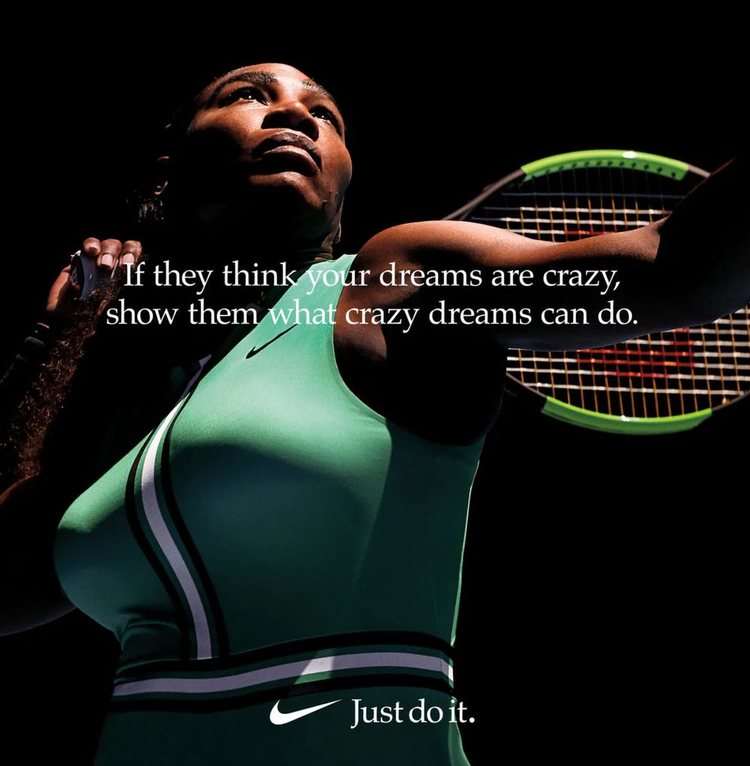
Nike has a clear and consistent brand message that encompasses an active brand archetype; the company promotes athleticism and determination. Nike embodies the spirit of their tagline, “Just Do It,” by encouraging people to push their limits and achieve their goals. This message is reinforced time and time again in all their marketing campaigns and communications.
Nike’s iconic swoosh logo directly aligns with brand personality by symbolizing movement, speed, and achievement. By constantly promoting an athletic lifestyle and partnering with world-class athletes and sports teams, Nike has solidified its performance-oriented personality many times over.
Besides simply pushing an athletic lifestyle in a repetitive fashion, Nike makes sure to build emotional connections with their target audience by creating marketing campaigns that tap into the personal side of sports and competition. Their ads often tell powerful stories about dedication and resilience, which strengthen their emotional bond with their audience. Additionally, Nike promotes social and environmental responsibility through initiatives such as their “Move to Zero” campaign, which aligns with core values related to sustainability and ethical responsibility.
By clearly communicating to its target audience its values and commitments, Nike has created a truly global brand. Nike’s consistent brand personality maintains a strong emotional connection with its target audience, serving as a great example of how brand personality can drive success and loyalty.
Apple
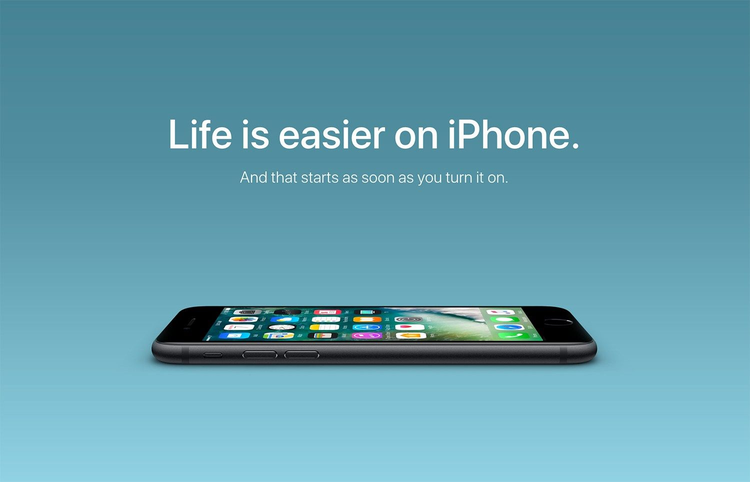
In its marketing and advertising, Apple showcases its products in a clean and simple manner, highlighting unique features and capabilities. Additionally, the brand emphasizes its commitment to innovation, quality, and values like privacy, security, and environmental responsibility.
By constantly reinforcing their brand values and maintaining sleek and simple advertising tactics, Apple has solidified itself as a leader in the tech industry, fostering strong brand loyalty and influencing consumer behavior. Apple is a prime example of how a well-defined brand personality can be a driving force behind a company’s success.
Patagonia

Patagonia is associated with a sense of adventure and freedom. Its brand personality is deeply rooted in environmental stewardship and authenticity. The company’s founder, Yvon Chouinard, is an outspoken advocate for various environmental causes, and Patagonia reflects these values through responsible business practices. For example, the company donates a percentage of its profits to environmental organizations and actively participates in environmental initiatives. By practicing what they preach, Patagonia consistently builds authenticity and trust with its consumer base.
In its marketing campaigns, Patagonia has an anti-consumerist approach. For example, Patagonia’s “Don’t Buy This Jacket” campaign encourages consumers to reduce waste and consumption. Additionally, Patagonia emphasizes quality and durability, creating products meant to last a long time. Patagonia’s anti-consumerist stance is a bold and distinctive aspect of the brand’s personality, challenging traditional business models by emphasizing long-lasting, sustainable products.
Patagonia’s willingness to challenge the status quo and speak out on controversial issues embodies a brand personality that is rebellious and unafraid to confront societal norms. The brand’s strong commitment to environmental and social values, authenticity, and adventure set Patagonia apart as a brand, making it a great example of a brand that goes beyond mere product offerings to connect with its audience on a deeper level.
Disney
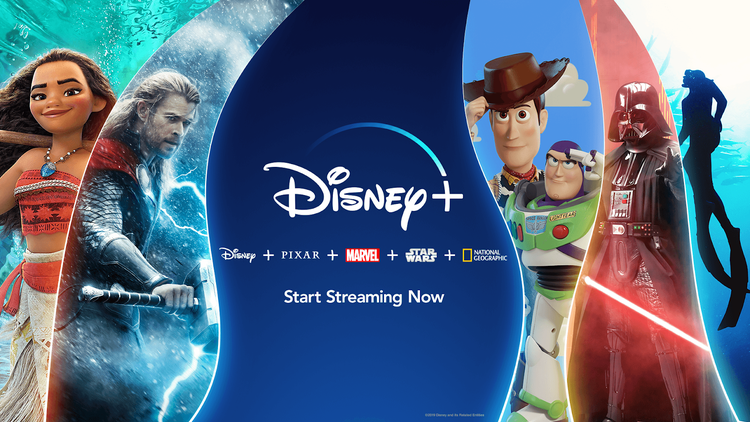
This company has consistently delivered the same brand embodiments for decades: joy, magic, and childhood nostalgia. By utilizing its rich history and a long line of beloved characters and stories, Disney emphasizes feelings of fantasy and timelessness that resonate across generations. Disney’s storytelling also often taps into deep emotions, creating a connection with its audience through relatable and heartfelt narratives.
In response to changing market dynamics in recent years, Disney has worked to promote diversity and inclusivity in its content. Disney’s shift in this area reflects a newfound commitment to social responsibility and aligns with evolving cultural norms. Disney’s well-defined brand personality and willingness to evolve over time have allowed it to maintain a devoted and passionate audience across the globe, while staying true to its distinctive and imaginative personality.
Dove
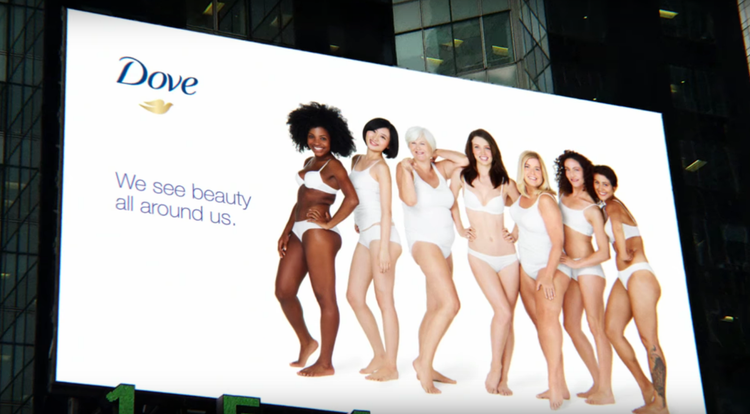
Dove is transparent about its marketing strategies and the use of Photoshop in advertisements. Additionally, Dove is known for its commitment to research and dermatological expertise. Being both transparent and research-focused reinforces a brand personality that values honesty, trust, and integrity. By showcasing real people and their natural bodies while remaining open and honest, Dove promotes positive social change, reinforcing its impact and relevance on a deeper, values-driven level.
How to create a brand personality
Follow the five steps below to effectively define and maintain a brand personality that resonates with your target audience and sets your brand apart in a competitive landscape.
1. Know your audience.
The first step to successfully creating a brand personality is to understand your target audience. Start by conducting market research to gather insights about your target audience, including:
- Demographics: age, gender, location, education, income, and family status
- Psychographics: values, lifestyles, attitudes, interests, and beliefs
- Behavior: purchase and usage patterns, preferences, brand loyalty, and customer journeys
Once you have a better understanding of your target audience, create a buyer persona that summarizes the key characteristics and motivations of your ideal customer. Make sure to research and include your audience’s pain points, needs, and aspirations as they relate to your products or services. Consider collecting customer feedback or conducting surveys to gain firsthand insights into your target audience’s perceptions and expectations.
2. Define what makes your brand unique.
What makes your brand different from your competitors? Evaluate your products or services and brand history to identify what sets your brand apart from your competitors; a great place to start is by analyzing your company’s values and origin story. Consider any specific features or approaches that make your company’s offerings different or better than other similar products on the market.
Make sure to examine how your brand is perceived in the market — how do your customers think about your brand? Why do they think your brand is unique or worth buying from? Make sure to create a brand personality that can be connected back to your target audience’s existing perceptions of your brand.
Review your competitors and the tactics they have utilized to create their own unique brand personalities. Note what strategies have been successful and which ones have failed, and make sure to avoid replicating existing brand personalities.
3. Choose core traits.
Start by listing a broad range of personality traits and characteristics that you think best represent your brand; try to focus on using positive adjectives such as dependable, innovative, or down-to-earth. Once you have created a broad list, prioritize and narrow down these traits to a select few that align best with your audience and your brand’s sense of individuality.
Make sure that your finalized list of traits is both authentic and aspirational. Each trait should remain true to your brand’s capabilities and values while reflecting the desired brand identity. Additionally, confirm that you have chosen traits that will make your brand more relatable and attractive to your target audience.
4. Create a personality statement and brand style guide.
A brand personality statement is a concise and clear description of the personality that a brand wants to convey to its target audience. Your brand’s personality statement should be easy to understand and incorporate your brand’s mission, values, and the core traits you’ve selected.
For example, Patagonia as a brand encapsulates the brand dimension of ruggedness, as they pride themselves on adventure, sustainability, and durability. If Patagonia were to create a brand personality statement, it might look something like this: “Patagonia is centered around a relentless commitment to environmental consciousness and a deep love for outdoor exploration. We strive to provide our customers with gear that allows them to better live a sustainable and adventurous lifestyle.”
Once you have your brand’s personality statement, create a brand style guide. Over 80% of organizations have brand guidelines to maintain consistency in their branding. These guidelines help define your brand personality and ensure every aspect of your branding aligns with your unique identity.
A brand style guide includes information on your brand’s tone of voice, color palette, typography, logo usage, imagery, and more. In conjunction with a personality statement, a style guide helps ensure consistency in all your branding and marketing materials across platforms, which can increase brand recognition and strengthen your brand equity.
5. Integrate and evolve your personality.
Start implementing your chosen core traits across your website, social media accounts, marketing materials, and customer interactions. Once you have carried out these changes, monitor and evaluate how well your brand personality resonates with your target audience. Collect feedback from customers and stakeholders to gain further insights.
Stay open to adapting and evolving your brand personality over time as your company or the market changes and grows. Flexibility and the ability to align with shifting customer expectations are crucial to long-term success. To maintain a competitive edge, keep an eye on your competitors and how their brand personalities evolve so you can adjust as needed.
Develop your brand personality with Adobe Express
Your brand personality is a key element of your overall branding. It's the set of human characteristics that your brand represents, and is expressed through your tone of voice, core values, beliefs, and visual identity.
When your brand personality is well-defined and consistent, it helps build loyalty among your target audience.
Adobe Express offers a variety of tools to help you develop your brand personality. Use these tools to create brand guidelines and style guides, build consistent graphics, and add your brand logo to your marketing materials.
With Adobe Express, you can easily create a brand personality that is both unique and memorable. So, what are you waiting for? Start using Adobe Express today to develop your brand personality.




